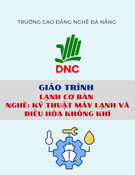
REVIEW ARTICLE
Partitioning and transmutation contribution of MYRRHA to an
EU strategy for HLW management and main achievements of
MYRRHA related FP7 and H2020 projects: MYRTE, MARISA,
MAXSIMA, SEARCH, MAX, FREYA, ARCAS
Hamid Aït Abderrahim
1,*
, Peter Baeten
1
, Alain Sneyers
1
, Marc Schyns
1
, Paul Schuurmans
1
, Anatoly Kochetkov
1
,
Gert Van den Eynde
1
, and Jean-Luc Biarrotte
2
1
SCK•CEN, Boeretang 200, 2400 Mol, Belgium
2
CNRS/IN2P3, 3 rue Michel-Ange, 75016 Paris, France
Received: 31 July 2019 / Accepted: 18 September 2019
Abstract. Today, nuclear power produces 11% of the world’s electricity. Nuclear power plants produce
virtually no greenhouse gases or air pollutants during their operation. Emissions over their entire life cycle are
very low. Nuclear energy’s potential is essential to achieving a deeply decarbonized energy future in many
regions of the world as of today and for decades to come, the main value of nuclear energy lies in its potential
contribution to decarbonizing the power sector. Nuclear energy’s future role, however, is highly uncertain for
several reasons: chiefly, escalating costs and, the persistence of historical challenges such as spent fuel and
radioactive waste management. Advanced nuclear fuel recycling technologies can enable full use of natural
energy resources while minimizing proliferation concerns as well as the volume and longevity of nuclear waste.
Partitioning and Transmutation (P&T) has been pointed out in numerous studies as the strategy that can relax
constraints on geological disposal, e.g. by reducing the waste radiotoxicity and the footprint of the underground
facility. Therefore, a special effort has been made to investigate the potential role of P&T and the related options
for waste management all along the fuel cycle. Transmutation based on critical or sub-critical fast spectrum
transmuters should be evaluated in order to assess its technical and economic feasibility and capacity, which
could ease deep geological disposal implementation.
1 Introduction
Utilization of nuclear energy from fission reaction of
uranium (U) and plutonium (Pu) produces high level
radioactive waste (HLW) including minor actinides and
fission products. For example, the EU presently relies on
nuclear energy for ∼30% of its electric power production
from Generation II and III nuclear fission reactors leading
to the annual production of 2500 t/y of used fuel,
containing about 25 t of plutonium, and about 100\t of
HLW containing 3.5 t of MAs, namely, neptunium (Np),
americium (Am) and curium (Cm), and 3 t of long-lived
fission products (LLFPs). These MA and LLFP stocks need
to be managed in an appropriate way. The used fuel
reprocessing followed by the geological disposal (closed fuel
cycle) or the direct geological disposal (open fuel cycle) are
today the envisaged solutions, depending on national fuel
cycle options and waste management policies. The required
time scale for geological disposal exceeds our accumulated
technological knowledge and this remains the main concern
of the general public. Partitioning and Transmutation
(P&T) has been pointed out in numerous studies [1–9]as
the strategy that can relax constraints on geological
disposal and reduce the monitoring period to technological
and manageable time scales (few hundreds of years).
Therefore, a special effort has been made to integrate P&T
in advanced fuel cycles and advanced options for HLW
management. Transmutation based on critical or sub-
critical fast spectrum transmuters should be evaluated in
order to assess the technical and economic feasibility of this
waste management option, which could ease the develop-
ment of a deep geological disposal.
2 Status today
In most cases and various countries in EU such as France,
UK, Belgium, Germany, Spain, Sweden, Italy as well
as Japan, USA, Russia, South Korea, R&D and/or
*e-mail: hamid.ait.abderrahim@sckcen.be
EPJ Nuclear Sci. Technol. 6, 33 (2020)
©H. Aït Abderrahim et al., published by EDP Sciences, 2020
https://doi.org/10.1051/epjn/2019038
Nuclear
Sciences
& Technologies
Available online at:
https://www.epj-n.org
This is an Open Access article distributed under the terms of the Creative Commons Attribution License (https://creativecommons.org/licenses/by/4.0),
which permits unrestricted use, distribution, and reproduction in any medium, provided the original work is properly cited.

demonstration/validation/qualification programmes and
infrastructures related to the advanced options for HLW
management through P&T and ADS development already
exist for more than four decades IAEA-LMFNS [10]
OECD/NEA DataBase for WPFC or Experimental
Facilities [11,12]. In 2005, the research community on
P&T within the EU in collaboration with the DG Research
& Innovation of the European Commission started
structuring its research towards a more integrated
approach. This resulted in a European strategy based on
the so-called four building blocks at engineering level for
P&T as summarized below:
–demonstration of the capability to process a sizable
amount of spent fuel from commercial LWRs in order to
separate plutonium (Pu), uranium (U) and minor
actinides (MA) from Pu based spent fuels;
–demonstration of the capability to fabricate at a semi-
industrial level the dedicated fuel sub-assembly to be
loaded in a dedicated transmuter;
–design and construction of one or more dedicated
transmuters;
–provision of a specific installation for processing of the
dedicated fuel unloaded from the transmuter, which can
be of a different type than the one used to process the
original spent fuel unloaded from the commercial power
plants, together with the fabrication of new dedicated
fuel.
The four building blocks illustrated in Table 1 must be
consistently developed in parallel. This approach is
applicable in NI2050 [13] and will result in the identifica-
tion of the costs and the benefits of P&T for closing the fuel
cycle and solving the SNF legacy.
The Belgian Government decision on September 7,
2018, to build in Mol the new large research infrastructure
MYRRHA is a first sign of the realization of the building
block 3 here above. Belgium allocated budget of 558 M€for
the period 2019–2038 that would allow building the phase
one of MYRRHA consisting in a linear accelerator up to
100 MeV coupled to a Proton Target facility (called
MINERVA) and that will be operational around 2026. The
same decision foresees the financing of the further
development of the upgrade of the linac towards 600
MeV (phase 2) and of the MYRRHA sub-critical
reactor (phase 3) including the support R&D and licensing
work.
2.1 Advanced partitioning
Recycling of plutonium in the nuclear fuel cycle has been
established on an industrial scale, leading, for example, to
the use of MOX fuel in power reactors. Once Pu has been
removed, the main contributor to the radiotoxicity and
heat load of the remaining material is americium. In the
past decade, a number of options have been developed and
improved to separate Am from the PUREX rafinate. The
first process of this kind, called EXAM, was designed at
CEA in the 2010s. It was based on the previous DIAMEX-
SANEX process that aimed at co-extraction of Am and
Curium. The key development was the creation of the
suited molecule on which the selective stripping of Am is
based. The first test molecule TEDGA (tetraethyldigly-
colamide) was in a second phase replaced by TPEAN.
Although this molecule showed enhanced selectivity on a
lab scale, spiked tests of the EURO-EXAM process were
not sufficiently successful to elevate TPEAN as the new
reference molecule.
2.2 MA fuel production
Minor actinide fuel production has been established on a
lab scale where it has been shown that the production of
targets and small full segments is feasible.
2.3 Transmutation
In the field of transmutation, a distinction needs to be made
between the behaviour under irradiation of MA fuel, i.e. the
study of the transmutation process itself on the one hand
and the development of the transmuter itself on the other
hand. Transmutation studies have been carried out in the
Table 1. P&T building blocks.
2 H. Aït Abderrahim et al.: EPJ Nuclear Sci. Technol. 6, 33 (2020)

past using fast sodium cooled critical reactors and
dedicated positions in material test reactors. Both
homogeneous transmutation, with MA diluted at a low
content (<5%) in the standard driver fuel (U,Pu)O2 or by
heterogeneous recycling with MA concentrated (10–15%)
in UO2 based fuels into the radial blankets (outer part of
the core) have been tested. As mentioned above, the
transmutation tests have been performed in test reactors
that were not designed for transmutation. Although in the
development of the new GenIV fast spectrum critical
reactors such as ALFRED and ASTRID, transmutation is
envisaged, the track towards the development of a
dedicated transmuter on an industrial scale runs via the
MYRRHA project. A conceptual design for an ADS based
transmuter, EFIT, has been developed in the FP6 IP-
EUROTRANS. EFIT is a 400 MWth Accelerator Driven
System driven by a LINAC delivering 800 MeV protons at
a maximal current of 20 mA (typical operation would
require 13 mA). The system is a pool-type reactor and the
core is cooled by pure lead. The fuel types considered are
Inert Matrix Fuels (IMFs) such as CERCER (Ceramic-
Ceramic) and CERMET (Ceramic-Metal).
2.4 MA fuel processing
As the final building block in the Partitioning & Transmu-
tation strategy, one has to consider the reprocessing of the
dedicated transmutationfuel. The irradiation times required
for an efficient transmutation are rather long and it is
uncertain if a single cladding could withstand these harsh
conditions. It might also be necessary to adjust the
plutonium content of the fuel to compensate for the loss in
reactivity (some plutonium will be burned). As with the
reprocessing of LWR fuel, also here the technologies can be
separated in two groups: the aqueous technologies and the
pyro technologies. These innovative fuels pose heavy
challenges for the aqueous processes as they will contain
significant amounts of plutonium and minor actinides that
will pose problems for the stability of the chemicals (both
solvents and extractants) used in the processes. The
technologically most simple option is just to increase
(significantly) the cooling-down period. However, this will
have strong negative consequences on the time-scales needed
to perform the irradiations.Advanced PUREX and GANEX
processes are under development, but only still at laboratory
scale. Since pyroprocessing does not rely on solvents and
extractants, it will suffer less from the high radiation output
of these innovative fuels. However, all technologies from the
pyro family are still only available at lab scale.
3 How to improve/accelerate through
cooperation
Based on the works performed in the SACSESS and
GENIORS projects, a new process concept (AMSEL),
relying on promising new molecule families developed for
the GANEX and i-SANEX processes was proposed. The
next step in the development is the validation of this newly
proposed flowsheet. The basic idea of the AMSEL process is
to selectively strip Am from an organic solvent containing
Am, Cm and lanthanide fission products. For this purpose
the behaviour of both Am and fission product behaviour
needs to be investigated. For the latter it is important to
investigate whether they will follow the Am in the process.
In addition the radiolytic stability of the system needs to be
studied. Besides the research aiming at collecting and
generating basic data, effort needs to be put in the
development of the process itself including proper
modelling and flowsheeting and the experimental valida-
tion of the process.
The main objectives in the field of transmutation
studies are focussed on the behaviour of 241Am in the
transmutation process since it is the dominant contributor
to the radiotoxicity of the nuclear waste after the removal
of Pu. An important step forward is to bring robustness,
accuracy and predictability to Fuel Performance Codes
(FPCs), which are the cornerstone of fuel behaviour
evaluation and safety analyses. In the context of
transmutation, the specific focus is on investigating Am-
bearing fuel safety-related behaviour. For this purpose,
three steps need to be taken. Firstly, one needs to Extend
the validation database of models and simulation codes
through the generation of data related to the production
and behaviour under irradiation of helium, fission gases and
fission products and to the specific thermo-chemical
properties of fuels containing Am. Secondly, we must
improve the prediction capabilities of FPCs by developing
and implementing more reliable mechanistic models, and
by moving towards coupling of FPCs with neutronics/
thermal-hydraulics codes, for the simulation of normal, off-
normal and accidental conditions. Finally, we have to
identify the experimental needs for code validation in off-
normal situations, leading to the pre-design of a simula-
tion-based transient irradiation tests that can be per-
formed in a dedicated transmuter. Here collaboration
between the different groups active in transmutation
studies in Europe should be encouraged.
In the development of the transmuter, MYRRHA has
come to a stage where the licensing process is aimed to be
completed by 2026 and the redaction of the required
documents including the preliminary safety assessment
report (PSAR) should be completed by 2024. As a result,
research supporting this effort by delivering input for the
PSAR is required to make significant steps forward.
Particularly, efforts should be focussed on the safety of the
driver fuel and the fuel assembly and core arrangement in off
normal conditions including transients, fuel blockages and
fuel assembly deformations. The primary system safety
should be focussed on the coolability of the system under all
circumstances including the investigation of heat transfer
and natural circulation in a pool configuration. In addition,
sufficient effort needs to be put in the assessment of
radiological release from the system, in particular in accident
scenarios.
4 Contribution of MYRRHA to the EU
strategy towards industrialization of P&T
It is clear that due to the sheer size and cost of an
installation like EFIT, one should work on smaller
H. Aït Abderrahim et al.: EPJ Nuclear Sci. Technol. 6, 33 (2020) 3

prototypical systems, for all the four building blocks in the
European strategy. Moreover, the ADOPT frame work [6]
also indicated that a demonstrator facility operating at a
power of 50–100 MWth should be constructed as a stepping
stone towards EFIT. MYRRHA, as a small-scale Acceler-
ator Driven System that can provide fast neutrons for
irradiation purposes, is put forward by SCK•CEN and
recognized by the European Commission as a likely
demonstrator. MYRRHA as an ADS Demo has the
important objectives
1
to:
–demonstrate the Accelerator Driven System technology
•demonstrate the reliability of the proton accelerator;
•demonstrate the coupling of a proton accelerator and
sub-critical core at sufficient power;
•demonstrate the heavy liquid metal technology;
–demonstrate the feasibility of transmutation in such a
system by being able to load sample-sized and pin-sized
innovative ADS fuel materials for transmutation
research;
–provide representative irradiation conditions in support
of
•material qualification programs for EFIT;
•innovative ADS fuel qualification programs for EFIT.
To design and construct MYRRHA, a series of R&D
programs have been launched in the field of accelerator
technology, heavy-liquid metal technology and reactor
physics (the coupling of an accelerator to a subcritical
core). SCK•CEN has established HLM labs for corrosion,
for thermal-hydraulic experiments, lead and lead-bismuth
chemistry, for component testing etc. All this research and
development are essential for MYRRHA but contribute on
a larger scale to the design and development of the larger
EFIT facility.
5 FP7 and H2020 MYRRHA related projects
and their main achievements
Since the establishment of the four building blocks strategy
the fostering of the R&D programme within the DG RTD
programme for P&T and waste management via the closed
fuel cycle, became more evident and led to booking very
important results to the programme and the R&D
community driving this research. In the next paragraphs
of this chapter we are illustrating this progress by
summarizing seven projects of FP7 and H2020 related to
the subject as well as their main achievements.
5.1 MYRTE (MYRRHA Research and Transmutation
Endeavour)
The goal of MYRTE is to perform the necessary research in
order to demonstrate the feasibility of transmutation of
high-level waste at industrial scale through the develop-
ment of the MYRRHA research facility. Within MYRRHA
as a large research facility, the demonstration of the
technological performance of transmutation will be
combined with the use for the production of radio-isotopes
and as a material testing for nuclear fission and fusion
applications. Numerical studies and experimental facilities
are foreseen to reach this goal.
5.2 H2020 MYRTE main achievements
The MYRRHA Linac has to deliver a high-power proton
beam with very high reliability and with minimum beam
losses. The emphasis within MYRTE is on the injector
which is considered to be the most critical part. The proton
source and the low energy beam transport section have
been put into operation successfully. The construction of
the first accelerating structure, the 4-Rod Radio Frequency
Quadrupole (RFQ), has been completed and pre-condi-
tioning has been performed successfully. To feed the RFQ a
192 kW continuous wave Radio Frequency (RF) amplifier
has been developed. To control the RF phases and
amplitudes of the injector cavities a Low-Level RF control
system is required. The design of the digital system is
finished, and the system is ready to be used for the RFQ
high power RF and beam tests. The control system for the
RFQ is ready for first tests. Several diagnostics devices
have been designed and prototypes have been realized. A
reliability model of LINAC-4 at CERN has been developed
and is under validation with data from operation.
Prototypes of the Drift Tube Linac-cavities have been
performed successfully. As result, all cavities exceeded the
MYRRHA specifications.
In the thermal hydraulics work package, experiments
and simulations go hand in hand. The flow induced
vibration experiments have been finished successfully. Two
independent approaches implemented in different code
platforms have been developed to simulate flow-induced
vibrations and have already been applied to determine
preliminary modal characteristics of a MYRRHA rod
bundle.
Volatile radioactive nuclides will be formed in the
coolant of the MYRRHA reactor. Therefore, it is important
to study chemical reactions that govern the potential
release of these nuclides from the coolant to the gaseous
environment. The main outcome of previous projects was
that volatile species of nuclides form in presence of
moisture and when oxide layers are present on the liquid
metal. Currently, evaporation experiments are performed
to study systematically the influence of moisture and
oxygen content in the gas and the oxygen concentration in
the liquid metal. These experiments are supported by
theoretical studies. Also, the deposition of volatile
molecules on surfaces of different materials is studied,
with the purpose of finding materials that can be used to
remove them from the gas phase. Very encouraging results
have been obtained so far. These studies are performed on
the most important fission products.
Thanks to the sub-criticality of the reactor, the fuel
composition is more flexible for ADS than for a critical
reactor, allowing a larger amount of minor actinides in the
fuel. However, these advantages hold as long as the reactor
remains subcritical. Thus, online reactivity monitoring is
essential. Several methods of sub-criticality determination
including both planned to be applied for ADS and reference
1
MYRRHA has other objectives (radioisotope production, for
one) of course, but they are not of relevance for this report.
4 H. Aït Abderrahim et al.: EPJ Nuclear Sci. Technol. 6, 33 (2020)

ones were used and compared in MYRTE. The positions
and deposit of the detectors used for the sub-criticality
measurements are of high importance. This subject was
thoroughly investigated. The experiments dedicated to the
safety issues such as coolant and moderator voiding were
completed. The calculations are in acceptable agreement
with the experiments.
A specific work package in MYRTE is investigating
topic issues related to the safe use of (U,Am)O2-x fuel as
basis for transmutation of Am. Samples of sub-stoichio-
metric (U,Am)O2-x have been prepared, and their
thermal diffusivity was measured in the temperature
range between 500 and 1600 K. Fuel to liquid lead
bismuth metal interaction tests have been performed on
representative (U,Am)O2-x samples in contact with LBE
at 500 °C for 50 h under oxidizing and non-oxidizing
conditions. The samples were characterized afterwards
and no significant changes or interaction products were
found.
5.3 MARISA (MYRRHA Research Infrastructure
Support Action)
The FP7 project MARISA reviewed advanced fuel cycles
and approaches for the long-term management of radioac-
tive waste considered in the EU and nations worldwide.
Work performed as part of MARISA confirmed the
foremost role of MYRRHA in developing and demonstrat-
ing the concept of P&T with the long-term objective of
industrial deployment. Furthermore, research capabilities
offered by MYRRHA will allow for integrating diverse
national and international research programmes on
Partitioning & Transmutation.
5.4 FP7 MARISA main achievements
The main achievements of MARISA have been the
confirmation of positioning of MYRRHA as an Interna-
tional Open Users Facility in the European and global
research landscape; MYRRHA legal structure, articles of
association, intergovernmental agreements, governing
rules, procedures for in-kind contributions and IPR
defined; MYRRHA management principles developed,
management instruments implemented and access frame-
work for User Groups and Communities detailed;
MYRRHA financing mechanisms and instruments defined;
MYRRHA Environmental Impact Assessment Report
development initiated; Technical integration MYRRHA
primary system design, accelerator and Balance of Plant
accomplished.
5.5 MAXSIMA (Methodology, Analysis and
Experiments for the safety in MYRRHA Assessment)
The goal of MAXSIMA is to contribute to the “safety in
MYRRHA”assessment.
5.6 FP7 MAXSIMA main achievements [14,15]
Neutronic and shielding analysis as well as transient
analyses using system codes in support of the MYRRHA
safety studies has been carried out. The following main
topics of the MYRRHA safety analysis have been studied
in specific tasks of the MAXSIMA project:
–design of the MYRRHA core (and required shielding
studies) using 3D methods;
–study of a complete list of accidental events and analysis
of input data uncertainty propagation in the safety-
relevant output parameters;
–analysis of a number of severe accident scenarios
potentially leading to core disruption.
Also, the safety aspects of the fuel assemblies and the
control and safety rods of the reactor core have been
analysed. In the fuel assembly, the cooling of a partially
blocked fuel rod bundle was experimentally investigated. A
second experiment was carried out to validate the correct
movement of buoyancy driven control. Both experiments
were numerical supported by CFD simulations. See
Figure 1 for the control rod qualification.
To demonstrate the safety level of a steam generator in
the primary pool, a large scale experiment has been
designed, constructed and successfully carried out. The
goal of the experiment was to characterize the Steam
Generator Tube Rupture (SGTR) event in a configuration
relevant for MYRRHA. In parallel numerical tools have
been verified and validated to support the design phase as
well as the safety assessment of such solutions. Post-test
analysis was able to predict pressure and temperature time
trends in agreement with experimental data, providing a
contribution to code validation for water-LBE interaction
scenario in a large pool facility.
The TRIGA Annular Core Pulsing Reactor (ACPR) at
INR-Pitesti was used as a testing facility for transient test
experiments. Fuel test segments (UO2, DIN 1.4970
cladded) were designed and fabricated by SCK•CEN
and were transported to INR-Pitesti (Romania). The
objective of the tests is to establish the failure threshold,
expressed in deposited energy in the fuel, for fast transients.
All transient test results of the UO2 tests were reported,
design for MOX fuel fabrication and the MOX fuels
fabrication test results were issued. It is intended to carry
out transient test experiments in a follow-up project. See
Figure 2.
An enhanced innovative passive safety system for
Decay Heat Removal (DHR) of heavy liquid metal cooled
reactors was developed. For such reactors the systems
dedicated to heat removal should also guarantee that the
primary coolant is not brought to the so-called freezing or
solidification condition. Simulations have been carried out
by computational tools (RELAP5 and TRACE) showing
that the system is able to fulfil the expectations.
Fig. 1. MYRRHA control rod qualification.
H. Aït Abderrahim et al.: EPJ Nuclear Sci. Technol. 6, 33 (2020) 5









![Ngân hàng trắc nghiệm Kỹ thuật lạnh ứng dụng: Đề cương [chuẩn nhất]](https://cdn.tailieu.vn/images/document/thumbnail/2025/20251007/kimphuong1001/135x160/25391759827353.jpg)






